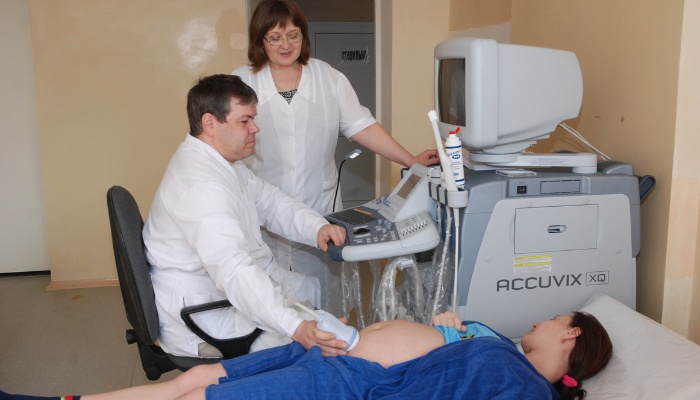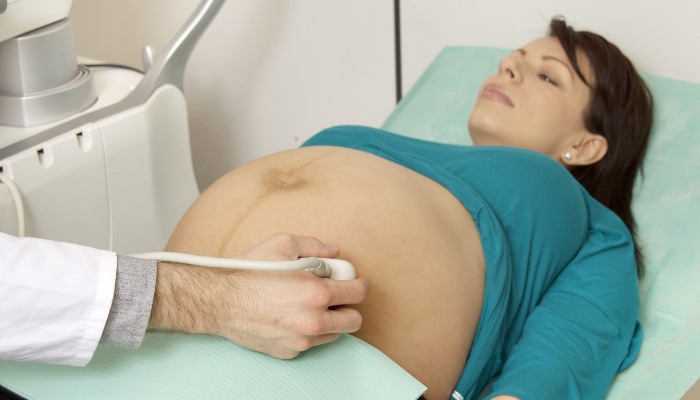Twin pregnancies can present more complexities compared to singleton pregnancies, therefore requiring closer monitoring by specialists.
Twin pregnancies usually call for more ultrasounds and more doctor appointments as two babies in utero can stress not only the mother’s body but the babies’ bodies as well.
Most twins will vary somewhat in size both at birth and in the womb.
It is possible for twins to measure behind the norm. Possible reasons for this include the fact that twins tend to be smaller than singleton babies and the parents may be of small stature. Also, measuring in utero has a fairly large margin of error, so the measurements may be inaccurate.
However, there could be greater complications at play if twins are measuring too small or too far behind expectations.
Every baby who is measuring behind, twin or not, should have more testing done to rule out any serious problems.
Twins Measuring Behind
Several reasons could account for the reason twins are measuring behind. Testing and more ultrasounds will help identify if there is something more problematic happening.
Twins tend to be smaller babies in utero and at birth, and a baby’s size can depend on the size of their parents.
There are, however, some other more serious medical complications that twin parents should know about.
Why One Twin May Measure Behind The Other
The first thing for parents to remember here is that twins can be different sizes, and variation in their size is common.
However, if a twin is measuring significantly smaller than their sibling, specialists will look for either selective fetal growth syndrome or twin-to-twin transfusion syndrome.
Selective Fetal Growth Syndrome
Selective Fetal Growth Syndrome (sFGR) can happen with multiples who share a placenta (monochorionic) and twins who each have their own placentas (dichorionic).
The causes and treatment for sFGR will be different based on whether or not the babies are sharing a placenta.
Selective Fetal Growth Syndrome differs from twin-to-twin transfusion syndrome in that the baby’s size is based on the sharing or functioning of the placenta.
Twin-to-Twin Transfusion Syndrome
This syndrome is rare and occurs in twins who share a placenta, so either identical or monochorionic twins.
Sometimes the distribution of blood vessels is uneven and one twin receives more blood than the other twin.
This can be dangerous for both twins and typically is monitored very carefully and often rectified by a specialized surgery during pregnancy.
Why Both Twins May Measure Behind
Twins could measure behind simply based on genetics. If a woman is small in stature and her husband is the same, their babies will most likely be smaller as well.
Most twins grow at the same rate as singletons for most of the pregnancy. Twins’ growth rate tends to slow around weeks 30-32 due to the twins competing for nutrients and space as they get bigger.
Will Measuring Behind Affect Due Dates?
Due dates are usually just best guesses in all pregnancies. Due dates are not usually affected by the size of the baby.
If a baby is measuring more than three weeks behind, doctors might adjust the due date. However, this is usually attributed to an incorrect assessment of conception and not because the baby is small.
Is It Normal For Twins To Measure Behind?
Growth restriction, the term for when twins measure behind, can be determined by regular ultrasounds and good prenatal care.
Growth restriction occurs in about 10-20% of multiples and should be closely monitored by doctors.
Excluding more serious reasons, it can be very normal for twins to measure a week or so behind.
When To Be Concerned
Doctors will tell you very quickly when there is cause to be concerned. Twin pregnancies are monitored more closely for this very reason.
With two babies in utero, more things can go wrong, and doctors know that. Your OB-GYN will let you know when to be concerned if one or both of your twins measure behind.
Understanding Twin To Twin Transfusion Syndrome
TTTS is a rare condition that can happen when babies share a placenta. Blood vessels in the placenta might not be equally distributed between the two twins sharing it.
In TTTS, the two twins each play a role. The donor twin gives away more blood than they get in return, and the risk of organ failure or malnourishment is great.
The recipient twin receives too much blood, which could cause cardiac complications.
Doctors will follow up on this diagnosis with an extensive fetal heart ultrasound to see if surgery is necessary and the babies are stable.

What Precautions to Take in Twin Pregnancy
Mothers pregnant with twins will usually eat the same amount of calories as moms carrying singletons.
Doctors will ask them to take the same prenatal vitamins but add in extra iron and folic acid as anemia is more common when carrying multiples.
Some practices consider all twin pregnancies to be high risk, so the care of a maternal-fetal doctor might be necessary.
Related Questions:
Can Ultrasound Measurements Be Wrong?
There is an accepted 15% error estimation with ultrasound measurements. Therefore, your baby can be either 15% smaller or 15% bigger than they are measuring.
Ultrasound measurements are usually more accurate in the first half of pregnancies than in the latter half when the baby’s growth is more erratic.
When Do Twins Grow The Most In Pregnancy?
Twins tend to grow the most during the first half of pregnancy. Twins tend to slow down in growth at about 30-32 weeks gestation as they are competing for nutrients.
The average gestation period for twins is 36 weeks, which could account for why twins are typically smaller at birth.
Closing Thoughts
It is not uncommon for twins to be both smaller in utero and smaller at birth than their singleton counterparts. Typically, this is not something that should be concerning.
Twin pregnancies will usually call for more ultrasounds, and any serious complications in which a twin or both twins is abnormally small will be closely monitored by the doctor.
For twin parents, it’s important to manage the things that you can and trust your doctors with the things that you cannot. It’ll be a good lesson to learn as you approach parenting!
Kristy is the mother of four, including identical twins. With a background in education and research, she is constantly learning more about parenting and raising multiples. When she has spare time, she enjoys hiking into the woods with a great book to take a break.

